
Hercule Poirot is a fictional Belgian detective created by British writer Agatha Christie. Poirot is one of Christie's most famous and long-running characters, appearing in 33 novels, two plays, and 51 short stories published between 1920 and 1975.

Cards on the Table is a detective fiction novel by the English author Agatha Christie, first published in the UK by the Collins Crime Club on 2 November 1936 and in the US by Dodd, Mead and Company the following year. The UK edition retailed at seven shillings and sixpence (7/6) and the US edition at $2.00.

Death in the Clouds is a work of detective fiction by British writer Agatha Christie, published in 1935. It features the Belgian detective Hercule Poirot and Chief Inspector Japp. It is a "closed circle" murder mystery: the victim is a passenger on a cross-Channel aircraft flight, and the perpetrator can only be one of eleven fellow-passengers and crew.

The Mysterious Affair at Styles is the first detective novel by British writer Agatha Christie, introducing her fictional detective Hercule Poirot. It was written in the middle of the First World War, in 1916, and first published by John Lane in the United States in October 1920 and in the United Kingdom by The Bodley Head on 21 January 1921.
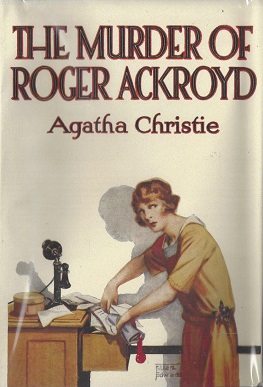
The Murder of Roger Ackroyd is a detective novel by the British writer Agatha Christie, her third to feature Hercule Poirot as the lead detective. The novel was published in the UK in June 1926 by William Collins, Sons, having previously been serialised as Who Killed Ackroyd? between July and September 1925 in the London Evening News. An American edition by Dodd, Mead and Company followed in 1926.

The A.B.C. Murders is a work of detective fiction by British writer Agatha Christie, featuring her characters Hercule Poirot, Arthur Hastings and Chief Inspector Japp, as they contend with a series of killings by a mysterious murderer known only as "A.B.C.". The book was first published in the UK by the Collins Crime Club on 6 January 1936, sold for seven shillings and sixpence (7/6) while a US edition, published by Dodd, Mead and Company on 14 February of the same year, was priced $2.00.
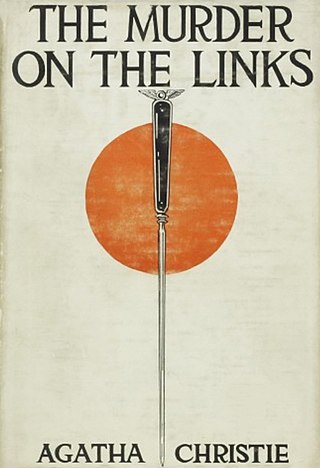
The Murder on the Links is a work of detective fiction by Agatha Christie, first published in the US by Dodd, Mead & Co in March 1923, and in the UK by The Bodley Head in May of the same year. It is the second novel featuring Hercule Poirot and Arthur Hastings. The UK edition retailed at seven shillings and sixpence (7/6), and the US edition at $1.75.
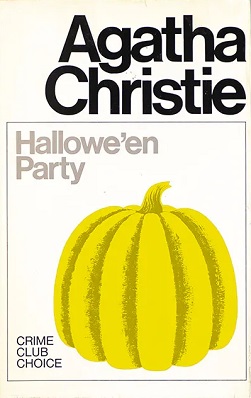
Hallowe'en Party is a work of detective fiction by English writer Agatha Christie, first published in the United Kingdom by the Collins Crime Club in November 1969 and in the United States by Dodd, Mead and Company later in the same year. This book was dedicated to writer P. G. Wodehouse. It has been adapted for television, radio, and most recently for the film A Haunting in Venice (2023).

Death on the Nile is a work of detective fiction by British writer Agatha Christie, published in the UK by the Collins Crime Club on 1 November 1937 and in the US by Dodd, Mead and Company the following year. The UK edition retailed at seven shillings and sixpence (7/6) and the US edition at $2.00.) The book features the Belgian detective Hercule Poirot. The action takes place in Egypt, mostly on the River Nile. The novel is unrelated to Christie's earlier (1933) short story of the same name, which featured Parker Pyne as the detective.

Evil Under the Sun is a work of detective fiction by British writer Agatha Christie, first published in the UK by the Collins Crime Club in June 1941 and in the US by Dodd, Mead and Company in October of the same year. The UK edition retailed at seven shillings and sixpence (7/6) and the US edition at $2.00.
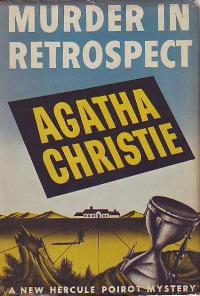
Five Little Pigs is a work of detective fiction by British writer Agatha Christie, first published in the US by Dodd, Mead and Company in May 1942 under the title Murder in Retrospect and in the UK by the Collins Crime Club in January 1943. The UK first edition carries a copyright date of 1942 and retailed at eight shillings while the US edition was priced at $2.00.

Curtain: Poirot's Last Case is a work of detective fiction by British writer Agatha Christie, first published in the UK by the Collins Crime Club in September 1975 and in the US by Dodd, Mead and Company later in the same year, selling for $7.95.

Murder in Mesopotamia is a work of detective fiction by British writer Agatha Christie, first published in the UK by the Collins Crime Club on 6 July 1936 and in the US by Dodd, Mead and Company later in the same year. The UK edition retailed at seven shillings and sixpence (7/6) and the US edition at $2.00. The cover was designed by Robin McCartney.
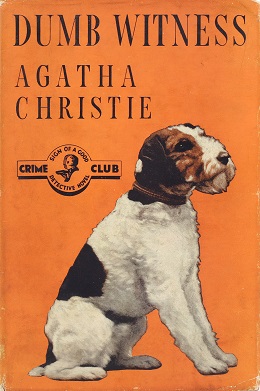
Dumb Witness is a detective fiction novel by British writer Agatha Christie, first published in the UK by the Collins Crime Club on 5 July 1937 and in the US by Dodd, Mead and Company later in the same year under the title of Poirot Loses a Client. The UK edition retailed at seven shillings and sixpence (7/6) and the US edition at $2.00.
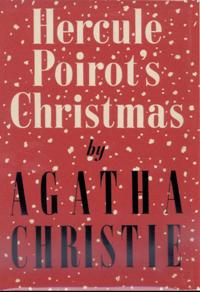
Hercule Poirot's Christmas is a work of detective fiction by British writer Agatha Christie, first published in the UK by the Collins Crime Club on 19 December 1938. It retailed at seven shillings and sixpence (7/6).

Cat Among the Pigeons is a work of detective fiction by Agatha Christie, first published in the UK by the Collins Crime Club on 2 November 1959, and in the US by Dodd, Mead and Company in March 1960 with a copyright date of 1959. The UK edition retailed at twelve shillings and sixpence (12/6), and the US edition at $2.95.

One, Two, Buckle My Shoe is a work of detective fiction by Agatha Christie first published in the United Kingdom by the Collins Crime Club in November 1940, and in the US by Dodd, Mead and Company in February 1941 under the title of The Patriotic Murders. A paperback edition in the US by Dell books in 1953 changed the title again to An Overdose of Death. The UK edition retailed at seven shillings and sixpence (7/6) while the United States edition retailed at $2.00.

Black Coffee is a play by the British crime-fiction author Agatha Christie (1890–1976) which was produced initially in 1930. The first piece that Christie wrote for the stage, it launched a successful second career for her as a playwright. In the play, a scientist discovers that someone in his household has stolen the formula for an explosive. The scientist calls Hercule Poirot to investigate, but is murdered just as Poirot arrives with Hastings and Inspector Japp.
The Hollow is a 1951 play by crime writer Agatha Christie. It is based on the 1946 book of the same name.
In Agatha Christie's mystery novels, several characters cross over different sagas, creating a fictional universe in which most of her stories are set. This article has one table to summarize the novels with characters who occur in other Christie novels; the table is titled Crossovers by Christie. There is brief mention of characters crossing over in adaptations of the novels. Her publications, both novels and short stories, are then listed by main detective, in order of publication. Some stories or novels authorised by the estate of Agatha Christie, using the characters she created, and written long after Agatha Christie died, are included in the lists.



















